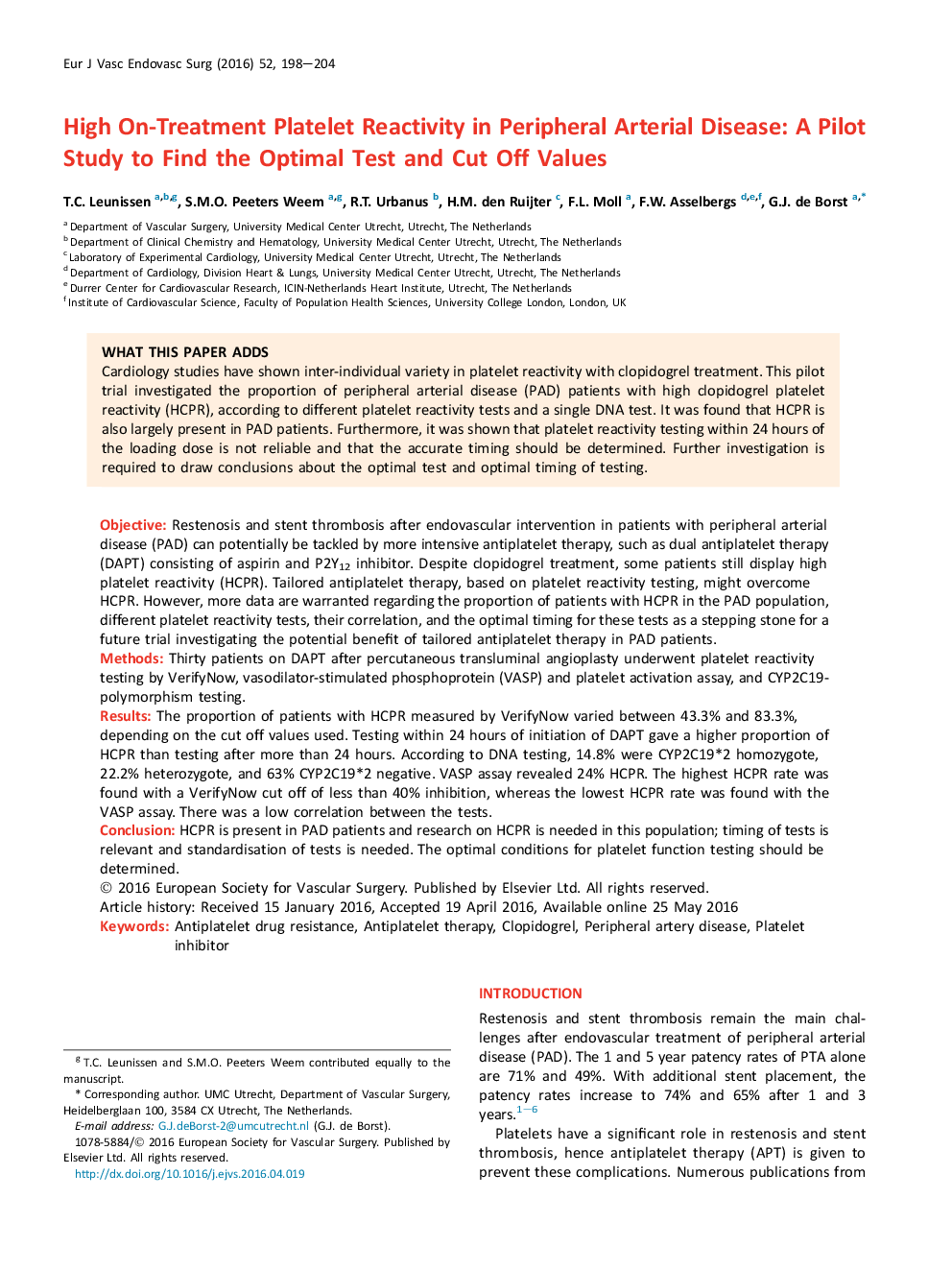| کد مقاله | کد نشریه | سال انتشار | مقاله انگلیسی | نسخه تمام متن |
|---|---|---|---|---|
| 5957169 | 1575427 | 2016 | 7 صفحه PDF | دانلود رایگان |
ObjectiveRestenosis and stent thrombosis after endovascular intervention in patients with peripheral arterial disease (PAD) can potentially be tackled by more intensive antiplatelet therapy, such as dual antiplatelet therapy (DAPT) consisting of aspirin and P2Y12 inhibitor. Despite clopidogrel treatment, some patients still display high platelet reactivity (HCPR). Tailored antiplatelet therapy, based on platelet reactivity testing, might overcome HCPR. However, more data are warranted regarding the proportion of patients with HCPR in the PAD population, different platelet reactivity tests, their correlation, and the optimal timing for these tests as a stepping stone for a future trial investigating the potential benefit of tailored antiplatelet therapy in PAD patients.MethodsThirty patients on DAPT after percutaneous transluminal angioplasty underwent platelet reactivity testing by VerifyNow, vasodilator-stimulated phosphoprotein (VASP) and platelet activation assay, and CYP2C19-polymorphism testing.ResultsThe proportion of patients with HCPR measured by VerifyNow varied between 43.3% and 83.3%, depending on the cut off values used. Testing within 24 hours of initiation of DAPT gave a higher proportion of HCPR than testing after more than 24 hours. According to DNA testing, 14.8% were CYP2C19*2 homozygote, 22.2% heterozygote, and 63% CYP2C19*2 negative. VASP assay revealed 24% HCPR. The highest HCPR rate was found with a VerifyNow cut off of less than 40% inhibition, whereas the lowest HCPR rate was found with the VASP assay. There was a low correlation between the tests.ConclusionHCPR is present in PAD patients and research on HCPR is needed in this population; timing of tests is relevant and standardisation of tests is needed. The optimal conditions for platelet function testing should be determined.
Journal: European Journal of Vascular and Endovascular Surgery - Volume 52, Issue 2, August 2016, Pages 198-204
